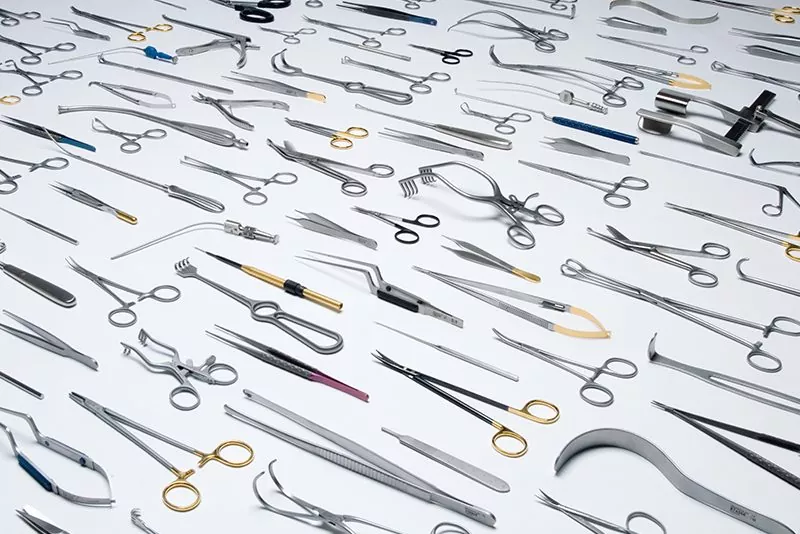Urology is a specialized specialty of medicine that studies the urinary tract and male reproductive organs. The area of urology has seen considerable advances, particularly in tool technology.
Introduction:
Urology Instruments Set in UK As urologists identify and treat problems affecting these systems, the requirement for precise and dependable devices becomes critical. In the United Kingdom, there is a great need for high-quality urology tools, which drives innovation and developments in this field. This page discusses the numerous urological instruments, their applications, and the importance of selecting the appropriate set for medical treatments.
Essential Urology Instruments and Functions:
Urology instruments are intended Urology Instruments Set in UK assist in a variety of diagnostic and therapeutic treatments. These tools are rigorously design to assure accuracy, safety, and efficacy. Here some of them. The following urology tools are regularly use in the UK:
- Cystoscopes are used to see the inside of the bladder and urethra. There are two primary types:
- Rigid cystoscopes provide clear and detailed images, making them excellent for biopsy and other surgical procedures.
- Flexible cystoscopes provide more comfort to the patient and are utilized for diagnostic purposes.
- Urethrotomes are used to cut and remove strictures in the urethra, allowing normal urine flow to resume.
- Nephroscopes are specialized endoscopes used to see and execute procedures within the kidney. They are essential for treating disorders such as kidney stones.
- Lithotripters use shock waves to break down kidney stones into smaller bits, allowing them to move more readily through the urinary tract.
- Ureteroscope are long, thin tools used to check and treat disorders within.
- Catheters are tubes that are place into the bladder through the urethra to drain urine. Foley catheters, intermittent catheters, and external catheters are some of the several varieties.
Choosing the Right Urology Instrument Set:
Factors to consider:
Patient care altered thanks to innovations like robotic-assisted surgery and minimally invasive procedures.When choosing a urology equipment set, numerous variables must consider to ensure optimal performance and patient safety:
Quality and durability: Instruments should be built from high-grade stainless steel or other biocompatible materials. Materials designed to endure repeated usage and sterilization.
Ergonomics: Instruments built for ease of use, reducing hand fatigue during lengthy procedures.
Versatility: A comprehensive set should comprise a variety of equipment to support a wide range of treatments, from diagnostics to intricate surgery.
Manufacturer Reputation: Choosing instruments from reputable manufacturers ensures quality and dependability.
Cost-performance: Although high-quality instruments may be more expensive initially, their longevity and performance can result in long-term savings.
Popular Urology Instrument Sets in the United Kingdom:
In the United Kingdom, there are several brands and vendors that offer high-quality urology instrument sets. Some of the most popular and trusted names are:
Karl Storz is know for producing high-quality endoscopic equipment with creative designs.
Olympus is a well-known leader in imaging and surgical devices. Richard Wolf: Provides a diverse range of urology devices, including cutting-edge endoscopes and lithotripters.
Boston Scientific is renown for its innovative urological devices and cutting-edge technologie.
Applications for Urology Instruments:
Diagnostic Procedures:
Urology devices are essential for identifying a variety of urinary and reproductive problems. Common diagnostic methods include:
- Cystoscopy allows for the examination of the bladder and urethra, which aids in the diagnosis of bladder cancer, infections, and urinary tract obstruction.
- Urodynamic testing uses specialized devices to evaluate bladder pressure and urine flow, which aids in the identification of urinary incontinence and other dysfunctions.
- Ultrasound Imaging Portable ultrasound instruments assist in seeing the kidneys, bladder, and prostate, providing important information for diagnosis and therapy.
Therapeutic Procedures:
Therapeutic techniques in Urology To treat patients effectively, specialize equipment is frequently use. The da Vinci Surgical System, allow surgeons to conduct difficult surgeries with more precision and control.
Key procedures include:
Transurethral Resection of the Prostate (TURP) is a frequent surgery for treating benign prostatic hyperplasia (BPH). Resectoscopes are use to remove sections of an enlarged prostate.
Extracorporeal Shock Wave Lithotripsy (ESWL) is a non-invasive therapy that use lithotripters to break up kidney stones into smaller fragments that naturally passed.
Percutaneous Nephrolithotomy (PCNL) is the use of nephroscopes to remove big kidney stones through a tiny incision in the back.
Ureteroscopy is use to remove stones or treat malignancies in the ureters, using ureteroscopes for precise intervention.
Post-operative Care:
Post-operative care in urology is crucial for patient recovery and includes the use of equipment such as:
Catheters: Used to drain urine after surgery, preventing issues such as urinary retention.
Stents: Stents are place in the ureter to maintain them open following surgery, allowing adequate urine flow.
Drainage Bags: use to collect urine from catheter and monitor post-operative recovery.
Future Trends for Urology Instruments:
The urology instrument is set for continual innovation Emerging trends include:
3D printing allow for the creation of customize instruments that are fitt to unique patient anatomy, improving surgical precision and outcomes.
Artificial intelligence: AI-powered diagnostic equipment and surgical robots that aid in difficult procedures with greater precision.
Telemedicine is the use of modern imaging and data-sharing tools to provide remote diagnosis and consultations, increasing access to urological care.
Conclusion:
Urology Instruments Set in UK, selecting a high-quality urology instrument set is critical for accurately diagnosing and treating urological diseases. The UK market provides a variety of advanced instruments from reputable manufacturers to ensure that medical personnel have the tools they need to provide high-quality care. As technology advances, the future of urological tools looks bright, with improvements that will improve patient outcomes and simplify medical procedures.


